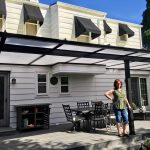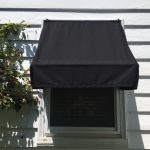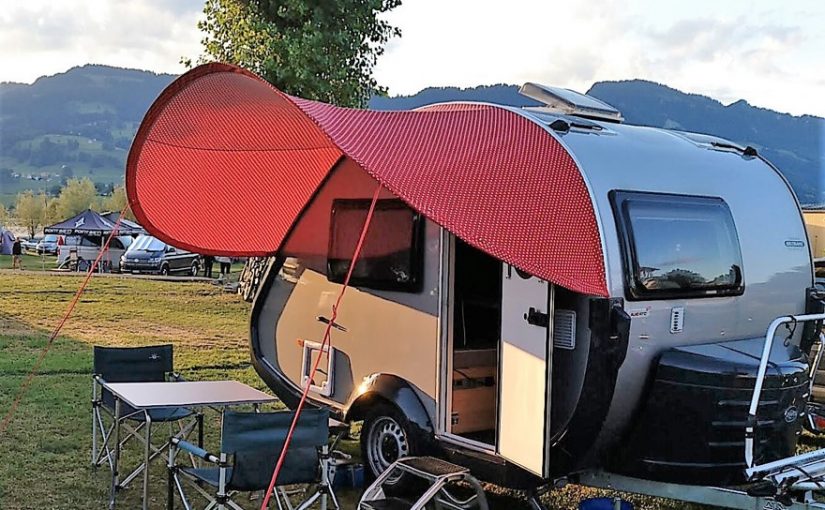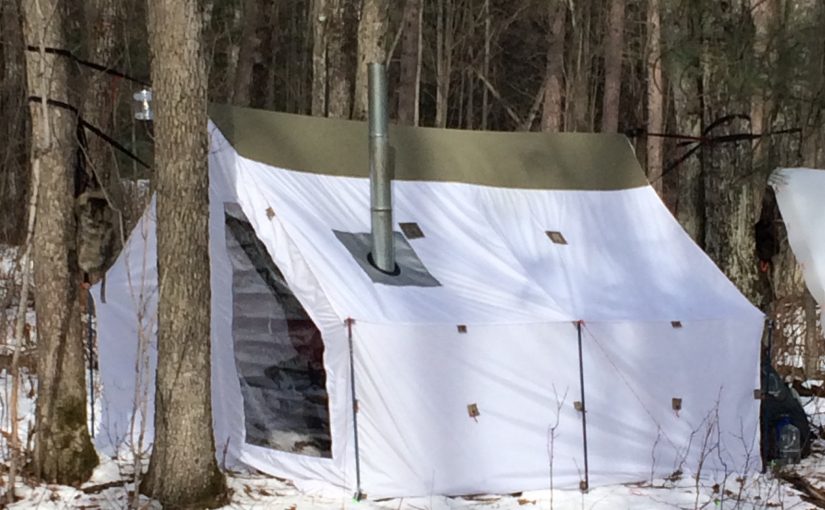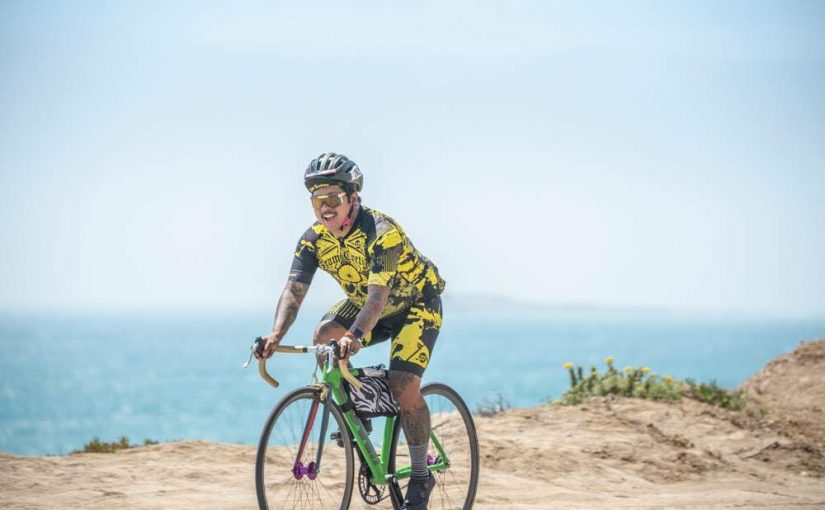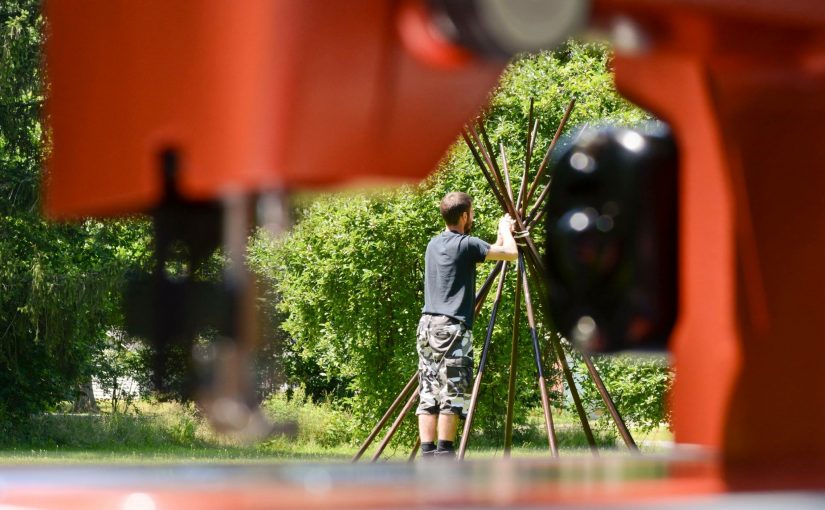Debra Brown is well acquainted with the world of sewing, having started her first project as a teenager. But what began as a fun, sporadic hobby turned into necessity years later when Debra and her husband moved to Portland, Oregon, and purchased a beautiful Cape Cod home built in 1937. After moving in, they quickly noticed their dream home was not without flaws. “The back of the house faces west and the August sun in Portland can be brutal. The house came with seasonal awnings for each window to mitigate the heat, but unfortunately, they were old and tattered. The awning company wanted $4,000 to remake them — seven in all!”
Bolstered by her “can do” attitude and sewing skill set, Debra set off to find a way to perfect her new home by creating her own awnings. This would prove to be her greatest sewing adventure yet, and would eventually lead her to Sailrite’s tools and supplies. We’re happy to have been a part of the journey, and Debra was kind enough to share her success story with us.
Q: What’s your history like with sewing? How long have you been doing it and how did you learn?
I learned to sew in middle school and still recall my very first projects as a 14-year-old — a simple gym bag and a dirndl skirt. Since then, over the years I’ve enjoyed sewing clothing and simple home décor items. When my husband and I moved to Portland, Oregon, and bought an 80-year-old house, my brother, Jesse, encouraged me to take on more ambitious sewing projects including draperies, duvet covers and Roman Shades. Jesse had been sewing custom home décor items for decades and taught me everything I know about sewing with heavier weight fabrics. He had also loaned me one of his industrial sewing machines to complete my projects in the past.
Q: What was the process like of creating your awnings?
When I decided to try making new awnings for our house, I knew it would be challenging. I had no idea what types of fabric were available, or what tools and notions I’d need. I began by taking apart one of the old awnings and documenting each step so I’d know how to construct a new one. My brother suggested I visit the Sailrite website to learn about appropriate fabrics and thread. I was amazed by the selection available and settled on Sunbrella® Marine Grade Fabric, based on Sailrite’s recommendations for awning construction.
I ordered just enough fabric to complete the first awning, as it would be a test as to whether or not I could really do this. Next, I needed the right tools. My best friends turned out to be the Sailrite® Edge Hotknife and Seamstick Basting Tape. I could never have managed the Sunbrella without these two lifesavers. Construction of the first awning was slow going. I borrowed two different sewing machines from Jesse just to get started.
It took me two entire days to create the test awning. I made lots of mistakes but also learned a lot about working with large pieces of Sunbrella. Sailrite’s videos on sewing flat-felled seams were incredibly helpful and helped me gain confidence in my abilities. I knew that if I was going to proceed with constructing six more awnings, I’d need a lot more fabric. But most importantly, I knew I’d need a heavy duty walking foot sewing machine that could handle the project, and that I could easily set up and move around in my sewing area.

Q: How did you decide on selecting a Sailrite Ultrafeed® Sewing Machine? What are your thoughts on the machine so far?
I spent a lot of time on Sailrite’s website researching machines and watching videos on working with Sunbrella Marine Grade Fabric. I decided on Sailrite’s Ultrafeed LS machine. I was not disappointed. The day my machine arrived, I spent time watching Sailrite’s assembly video and videos on winding bobbins, threading the machine, and sewing basic seams. Without these videos, I would not have felt comfortable setting up my machine and getting started sewing. They were incredibly helpful.
After completing six more awnings — the last one in a record time of three hours — I can say with confidence that the Ultrafeed LS is an elegant workhorse that seems to have been made for my project. The machine easily handled multiple layers of Sunbrella fabric. I never experienced stuck fabric, the machine losing its timing, or any of the other issues that I had with the borrowed sewing machines I’d used in the past.

Q: Do you plan to sew other projects using the Ultrafeed?
Now that I’ve finished the awnings, I’m excited to try other projects that utilize Sunbrella, such as patio cushions or maybe a heavy duty tent for my husband’s hunting trips. He’s already asked me to do some repairs on one of his canvas backpacks. Now that I have the experience, the tools and the Ultrafeed LS machine, I’m thinking the sky’s the limit!
Q: What was the most rewarding, and most challenging, part of constructing this project?
One of the most rewarding parts of the project was simply the realization that I could recreate a large custom item from scratch if I invested in the right tools and materials. The other big rewards are the energy savings on the second floor of my house, which, in the absence of awnings, can be very hot in the summer, not to mention saving over $2,500 by making the awnings myself. That’s even after my investment in the LS, the fabric, and the tools and supplies needed.
The greatest challenge was not having an existing pattern or sewing instructions for these custom awnings. Sailrite made the sewing easy. It was the cognitive piece — thinking through the steps involved — that was the most challenging.
Q: What was the reaction of your family and friends to the new project?
My family was really impressed with the new awnings. They watched me sew them over a couple of weeks, and were amazed at how professional they look. At first, some of my friends didn’t believe that I actually made them myself. “No way!” was the most common response I received after revealing the beautiful new awnings on the back of my house. Thank you, Sailrite!
Who We Are
Sailrite is your one-stop DIY shop! We are a passionate crew of do-it-yourselfers who strive to equip you with the supplies and how-to knowledge you need to tackle your next project. Do you want to learn upholstery, leatherwork, canvaswork, hobby sewing, bag making or more? We have the fabric, tools, hardware, sewing machines and notions you need to master any DIY. And even if you’ve never sewn before, our tutorials and how-to videos are designed for beginners and experienced crafters alike.
Start your DIY journey today: www.sailrite.com


